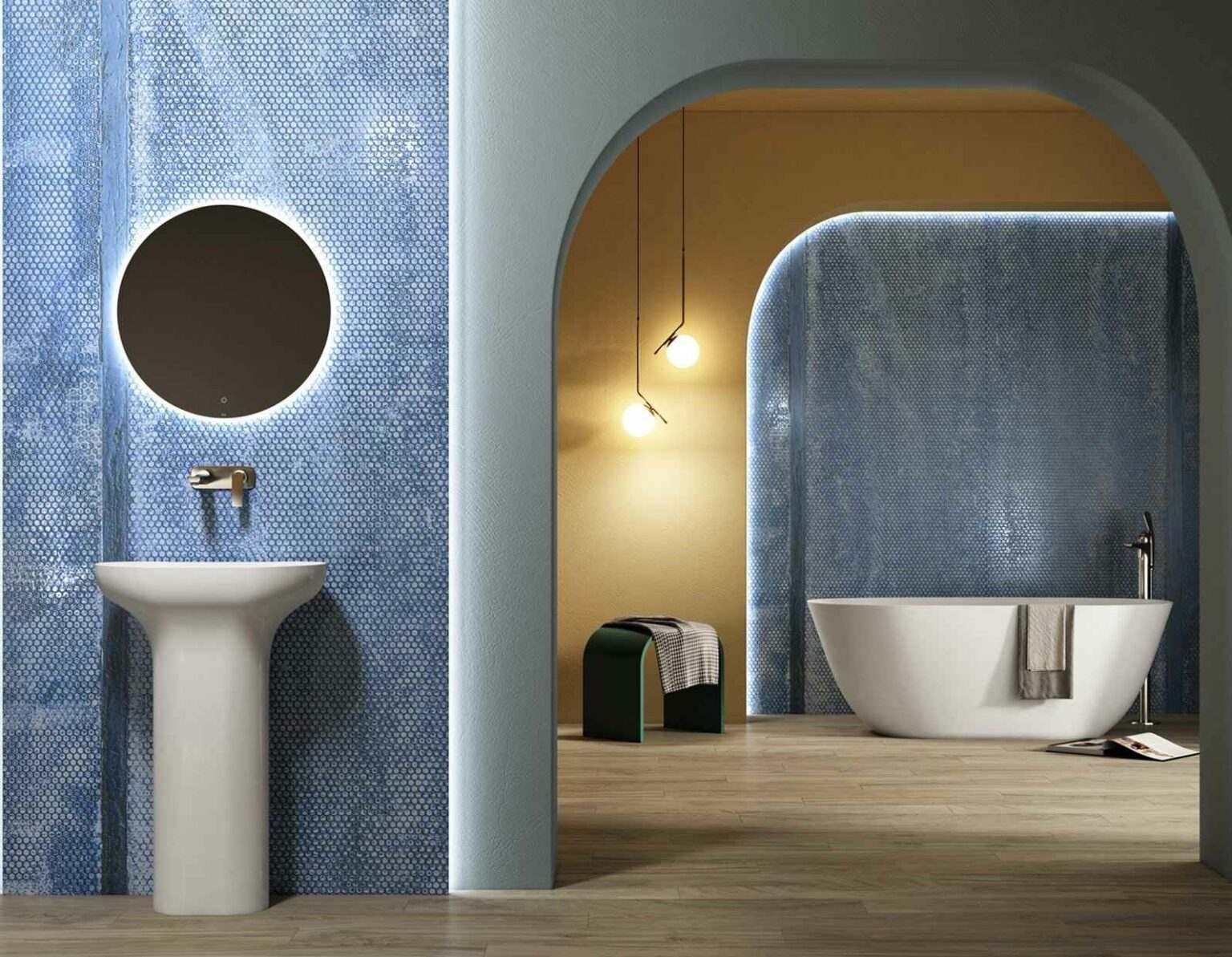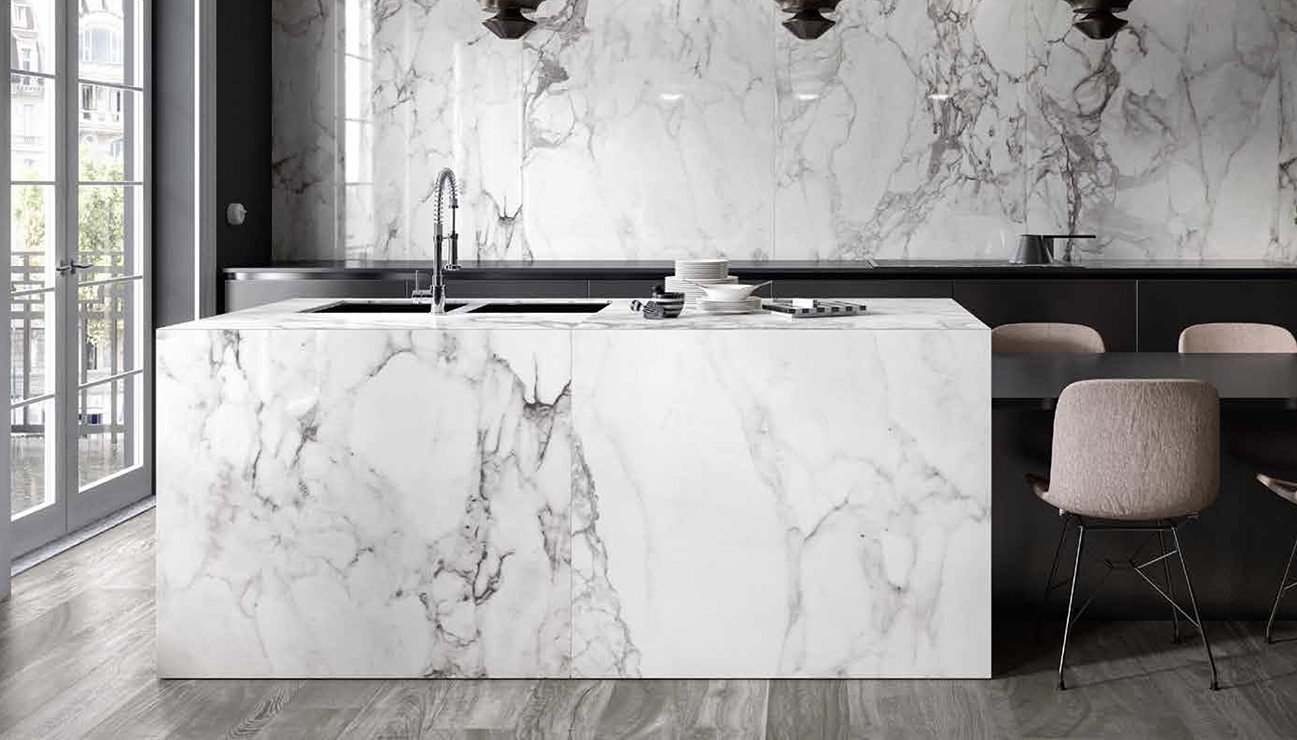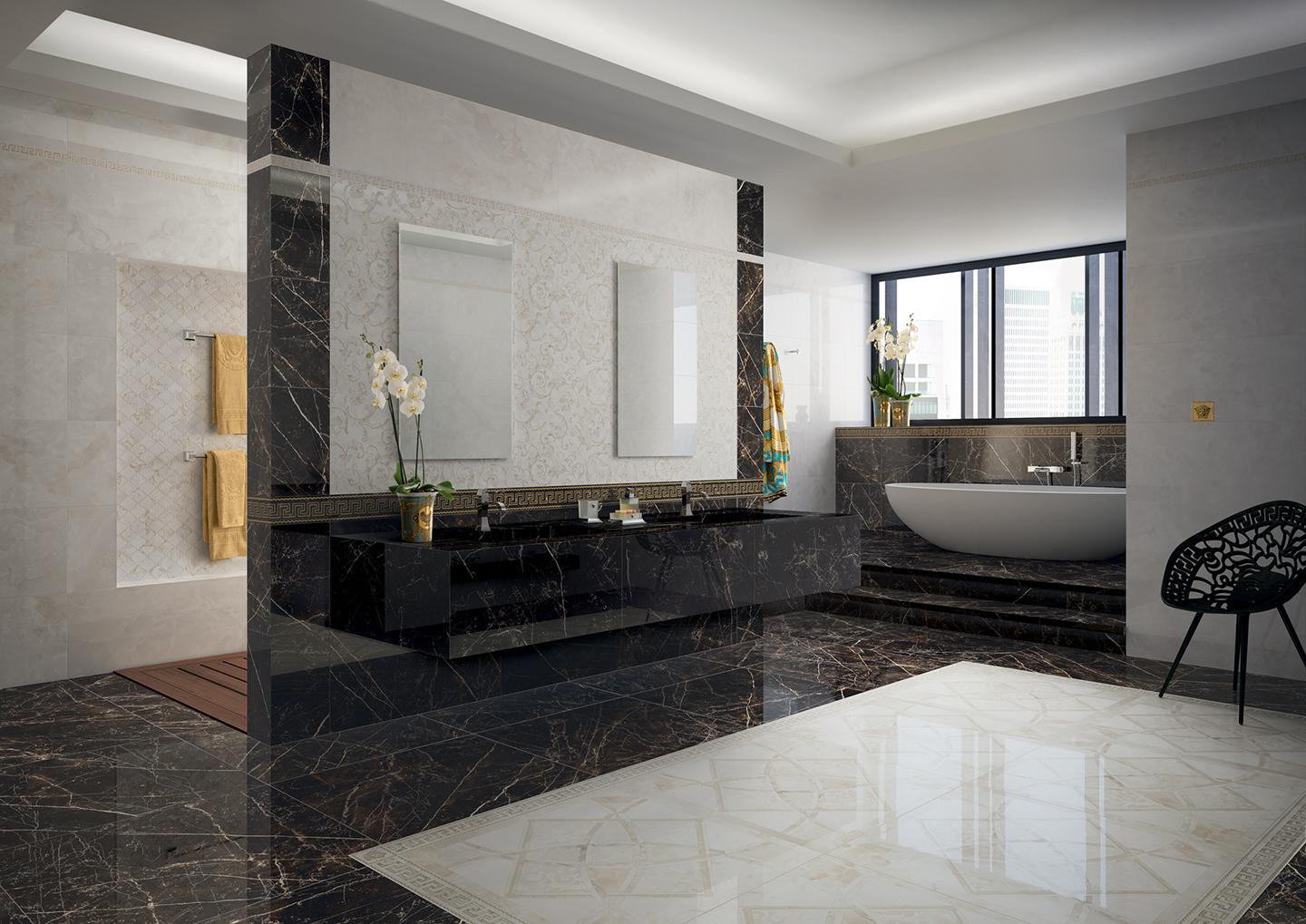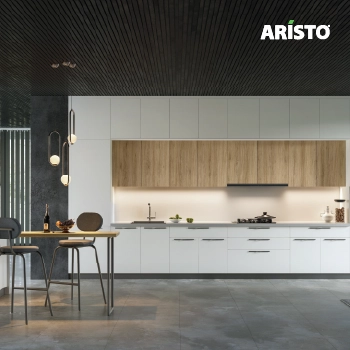The living room is the heart and soul of every home. It brings the family together during hours of leisure, hosts myriad celebrations and guests, and promotes structural fluidity and movement by connecting the house’s other rooms. Thus, as a high-foot-traffic area, it makes sense that flooring is the first thought that crosses your mind when designing your living room. Let us delve deeper and explore what goes into creating a comfortable and stylish living room. Read the step-by-step guide to learn how to select the best floor and wall tiles for your living or drawing room.
Contents
- 1 A step-by-step guide on how to select the best tiles for your living room
- 1.1 Step 1: Envision your living room style
- 1.2 Step 2: Settle down on the perfect material
- 1.3 Step 3: Match the colour and design of the drawing room tile with your interior
- 1.4 Step 4: Pick the right shape and size
- 1.5 Step 5: Weigh the various properties of tiles
- 1.6 Step 6: Look out for trends and innovations
- 1.7 Step 7: Find the best brands
- 1.8 Step 8: Calculate the cost
- 1.9 Step 9: Test the samples
- 2 FAQs
- 3 Bathroom tiles design: Modern designer tiling ideas for walls & floors
A step-by-step guide on how to select the best tiles for your living room
Step 1: Envision your living room style
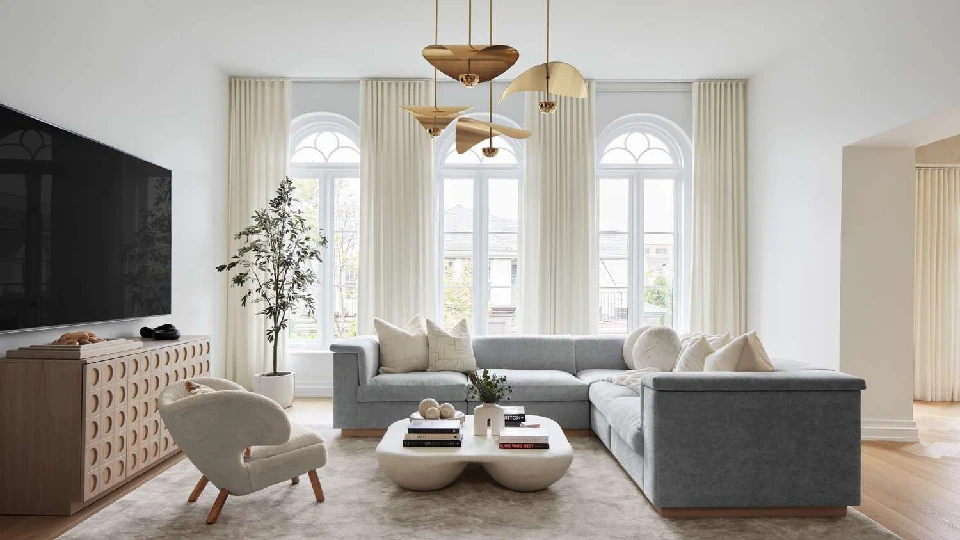
Image Source: marthastewart.com
Creating a mood board envisioning the vibe of your living room is the first step to finding the best drawing room tiles. If you happen to imagine a modern-themed living room, then glazed or digital vitrified tiles will breathe a similar vibe into your living room while smaller ceramic tiles with intricate patterns and glazed terracotta tiles are perfect to convey a more traditional and rustic setting of a living room. Similarly, choosing wooden tiles can lend a minimalist feel to your drawing room. Patterned porcelain tiles can be your perfect pick if you want to resurrect a quirky bohemian look.
Watch the video: 50 interior design styles explained (25 minutes)
Step 2: Settle down on the perfect material
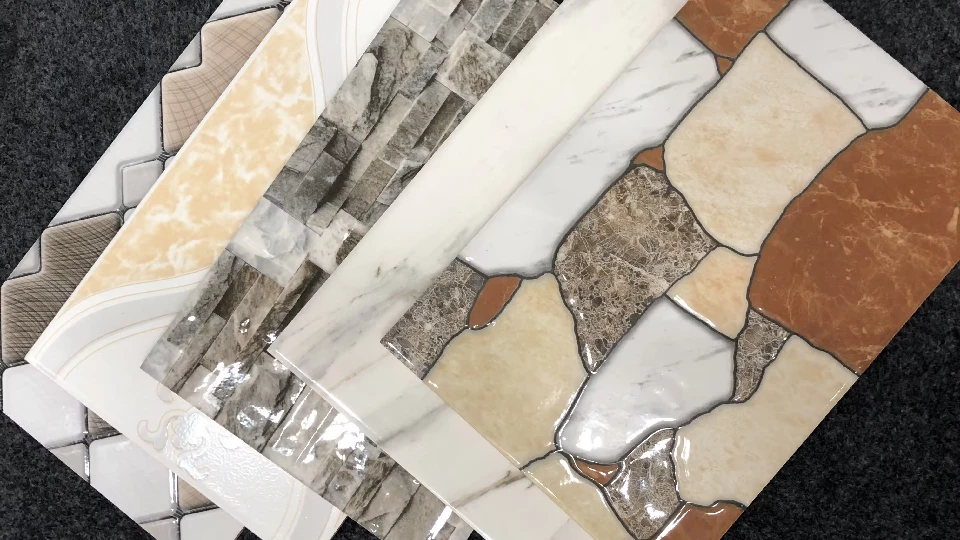
Image Source: alibaba.com
After envisioning your ideal living room, the next step is to zero down on the suitable tile material for flooring and walls. Choosing heavy-duty, low-maintenance, and anti-scratch tiles can be your ideal fit for your living room.
- Glazed ceramic tiles: These tiles are perfect for living room spaces because they are affordable, durable, easy to clean, and ideal for highly trafficked spaces.
- Vitrified tiles: These tiles are witnessing a meteoric rise in consumption given their stunning designs, strong and durable characteristics, and the ability to bear heavy loads without breaking or chipping.
- Porcelain tiles: They are extremely durable, highly impervious to water, require little upkeep, and are available in various patterns and finishes.
- Natural stone tiles and rock tiles: These tiles are perfect for adding that oomph factor to your living room floor and walls alike as they showcase strength and add a rustic feel.
| Also see: Porcelain vs Ceramic tiles – How are they different? |
Watch the video: The different tile material: What you should know (3 minutes 29 seconds)
Step 3: Match the colour and design of the drawing room tile with your interior

Image Source: gharpedia.com
Select the tile material that best reflects and complements your idea of a living room. It is important to create a symphony between the various elements of your living room including the furniture, wall paint, decor items and the floor tiles’ colour and design. Matching the patterns and textures of furniture with the floor tiles and the colour of the floor tiles with that of the wall tile will give you a well-rounded interior design look.
Watch this video: How do you match your wall color to your floor color? (3 minutes and 48 seconds)
Step 4: Pick the right shape and size
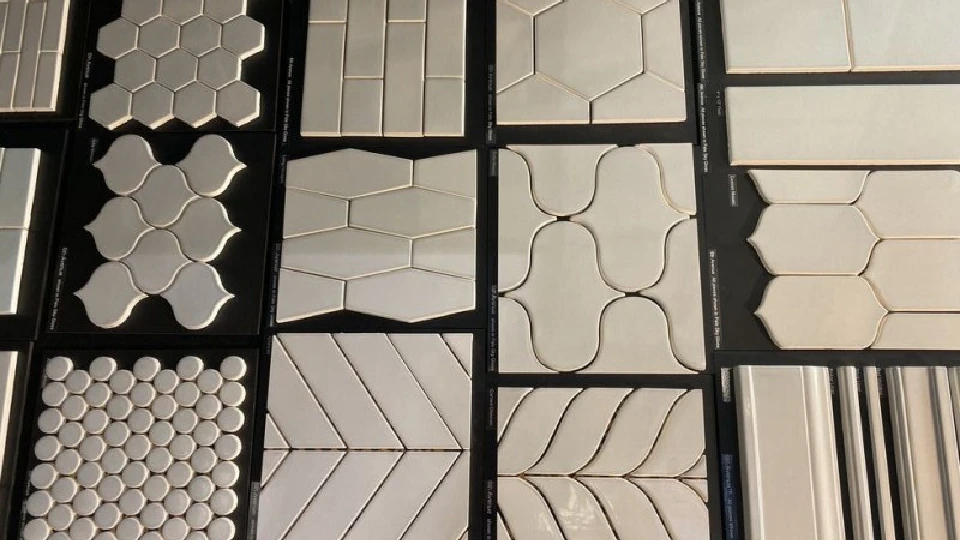
Image Source: thebestceramic.com
This is the most variable factor that depends entirely on your living room. A smaller room appreciates larger tiles because it makes the room appear larger and has fewer grout lines giving it a clean and sophisticated look. The living room usually has a larger area than other rooms in the house thus, installing larger tiles will promote an open and elegant appeal. Larger tiles will also require less labour and have fewer grout lines. Also, remember that wall tile should never be bigger than the floor tile as it might upset the room’s balance.
Step 5: Weigh the various properties of tiles
Floor tiles are manufactured to meet various evolving needs of the customers to provide more comfort and require less upkeep. Some important tile properties to look for while selecting tiles are:
- Slip resistance: Certain tiles exhibit more slip resistance than others. For example, ceramic tiles have more anti-slip resistance than vitrified tiles which tend to be slippery when wet because of their glossy finish.
- Stain and scratch resistance: Tiles that are resistant to stains and chemicals are easier to clean and maintain.
- Water-resistant: Vitrified tiles and porcelain tiles are highly non-porous compared to ceramic tiles or marble.
- Fireproof: Ceramic tiles are fireproof and thus, prevent the spread of fire.
- Mechanical strength: Due to the vitrification process, vitrified tiles have greater mechanical strength than granite or marble and they do not easily break or chip.
Step 6: Look out for trends and innovations
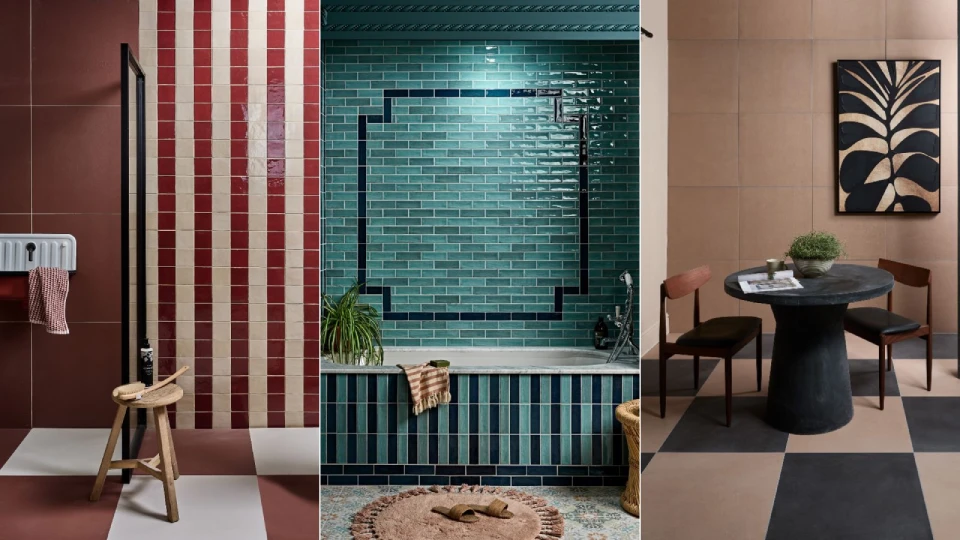
Image Source: homeandgarden.com
Thanks to newer innovations and evolving technologies in the tile industry, there are numerous trends to consider when selecting your perfect drawing room tiles.
Watch this video: Top tile trends for 2024 (1 minute and 1 second)
Step 7: Find the best brands
There are several tile brands in India catering to various needs of the buyers and brimming with varieties in size, style, design, and shape. Some reputed tile brands include Kajaria Ceramics, H&R Johnson, Somany Ceramics, Orientbell tiles, AGL tiles, Nitco tiles, RAK Ceramics, etc.
Step 8: Calculate the cost
Tight research of the tile market and the analysis of the kind of tile you need for your space can help you elevate your living room without burning a hole in your pocket. Different brands offer different prices, make sure to compare them and choose the tile from a reputed brand.
Watch this video: How to figure cost per square foot for installing tile (2 minutes 09 seconds)
Step 9: Test the samples
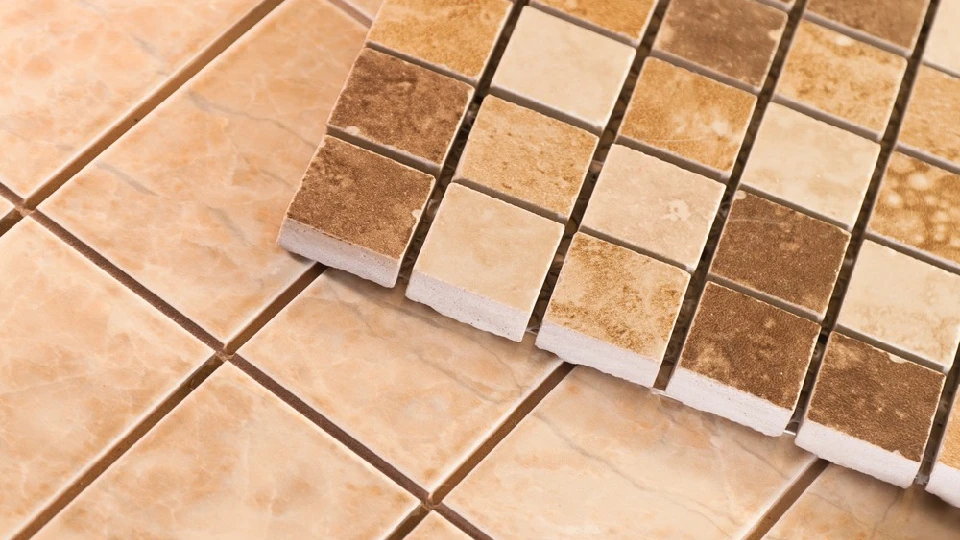
Image Source: quikerblog.com
A visual tile test can provide some reassurance as to whether the tile is of good quality by noticing simple things. Look out for the uniform colour and design of the tiles, check for the perfect edges of the tiles, and if it has any cracks, joints, holes, scratches, etc. Lastly, try tapping two tiles simultaneously and choose the one that produces a clear ringing sound as it denotes that the tile is of high quality.
Watch this video: How to choose tiles and test the quality of tiles? (8 minutes and 3 seconds)
Choosing the right tile for your living room can virtually transform the look of your space and make it look more comfortable and better optimised for space and style. We have listed all the steps you need to follow to find your perfect tile from scratch.
FAQs
What is the average cost of floor and wall tiles?
The cost of floor and wall tiles depends on various factors like tile type, design, shape, size, etc. but the average floor and wall tiles cost between Rs. 30 per sq ft to Rs. 400 per sq ft.
| Tile Type | Minimum Price | Maximum Price |
| Wall Tiles | Rs. 34/sq ft | Rs. 356/sq ft |
| Floor Tiles | Rs. 38/sq ft | Rs. 327/sq ft |
| Bathroom Tiles | Rs. 34/sq ft | Rs. 356/sq ft |
| Kitchen Tiles | Rs. 34/sq ft | Rs. 356/sq ft |
| Living Room / Hall Tiles | Rs. 39/sq ft | Rs. 356/sq ft |
What are the common wall tile colours for the living room?
Neutral wall tile colours like cream, beige, and light grey work perfectly well for the living room because they fit well with various interior design styles and colour themes. Select the colour of the wall tiles in line with the colour of the floor tiles and the overall theme of the living room. Some classic combinations include old brown and grey, wood and marble, etc.
How to select the right size for living room floor tiles?
Consider the size of the living room. If the living room is smaller, use larger tiles because they give the illusion of a room being bigger. For larger living rooms, larger tiles are ideal as they make them look open and expansive. Some common tile sizes for living rooms include 300×300 mm, 300×600 mm, 600×600 mm, 800×800 mm, 800×1200 mm, 600×1200 mm, etc.
Should I opt for glossy or matte finish tiles for the living room?
Glossy tiles offer high reflectivity making the room look bigger and they are also super easy to clean. Matte finish tiles are excellent flooring options because they enhance the other elements of the room, are low-maintenance and have better slip resistance. Glossy tiles give off a luxurious and modern vibe to the room while matte finish tiles create a more traditional and minimalistic interior design. Both are fantastic options however, the choice majorly depends on a person’s taste and preferences.
*The featured image used in this article is from countryfloors.com
Bathroom tiles design: Modern designer tiling ideas for walls & floors
The tile selection is one of the most exciting aspects of a bathroom makeover. When it comes to tile designs, the choice is u









